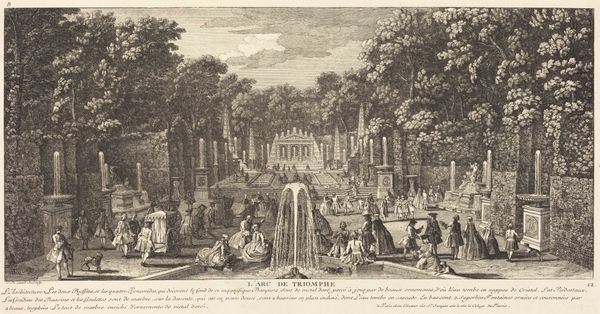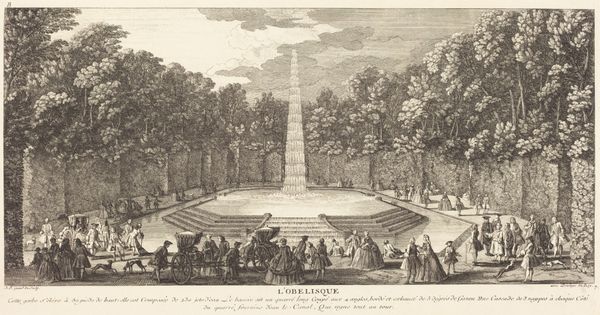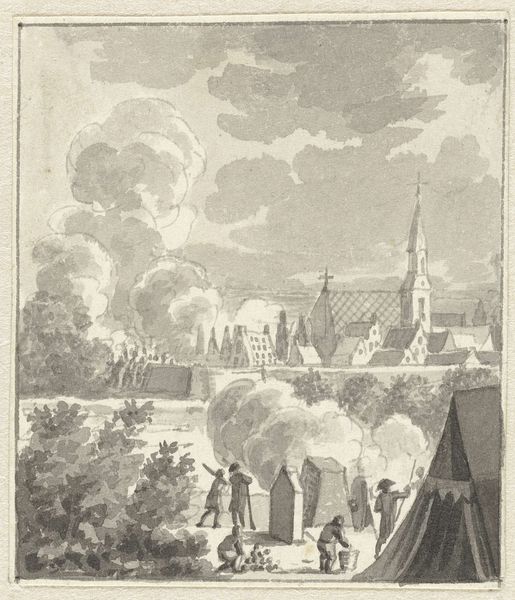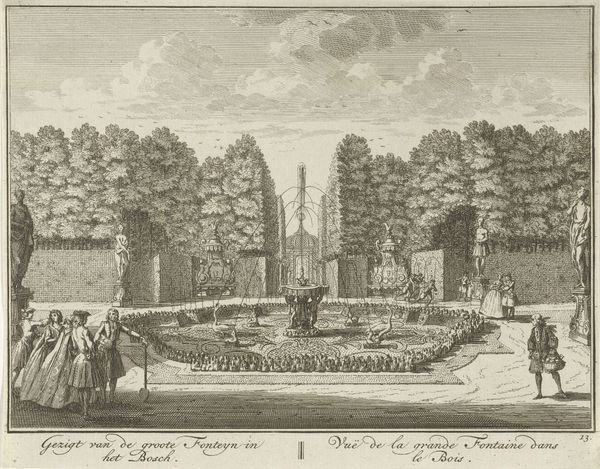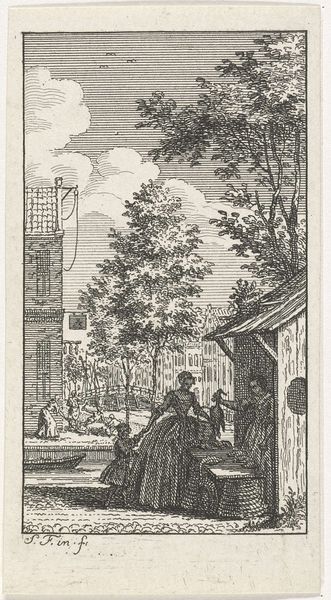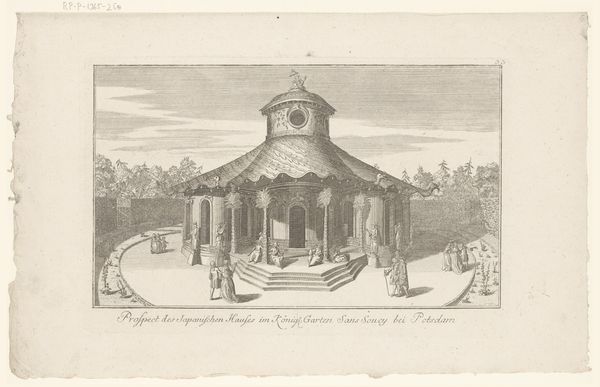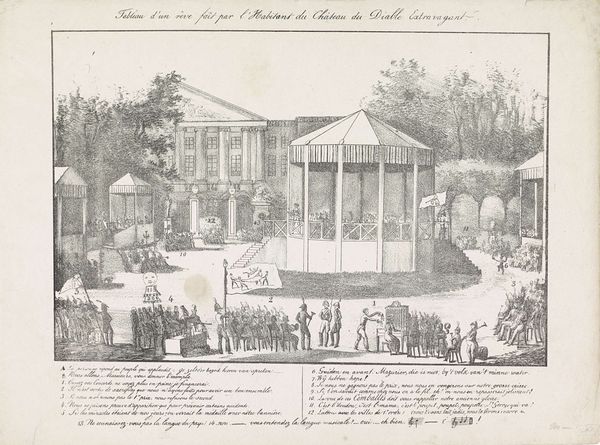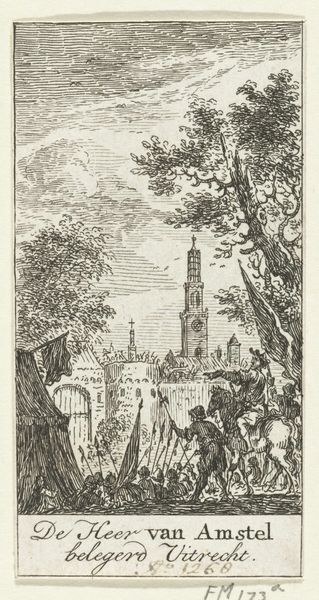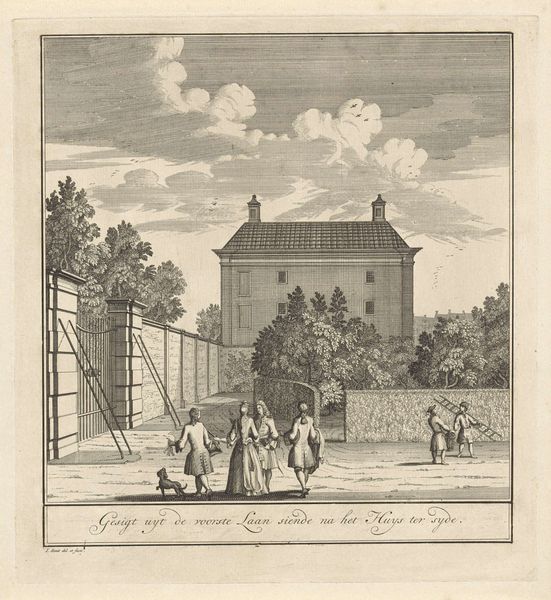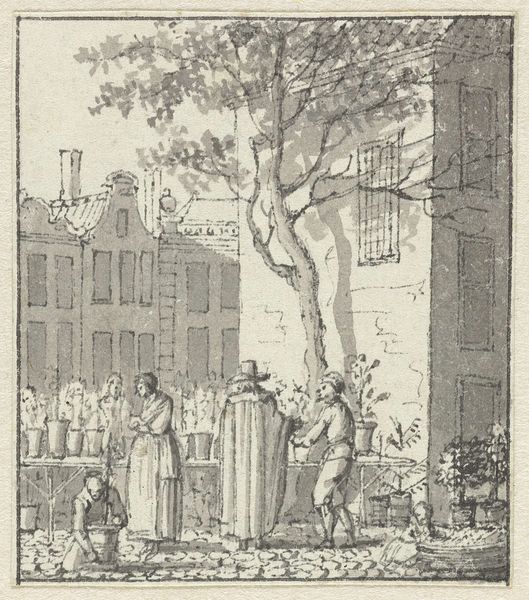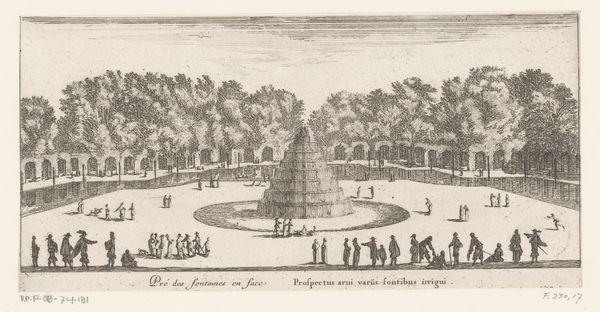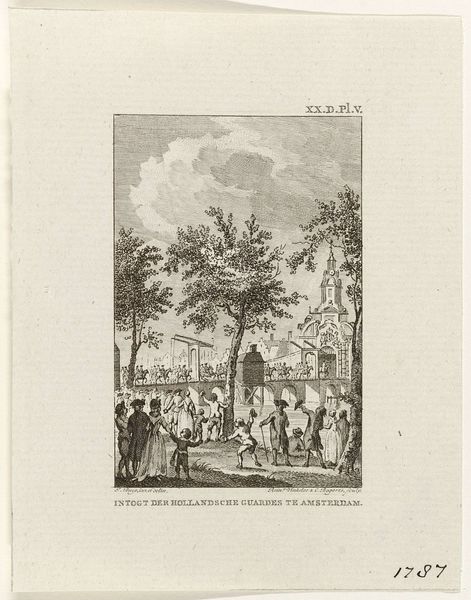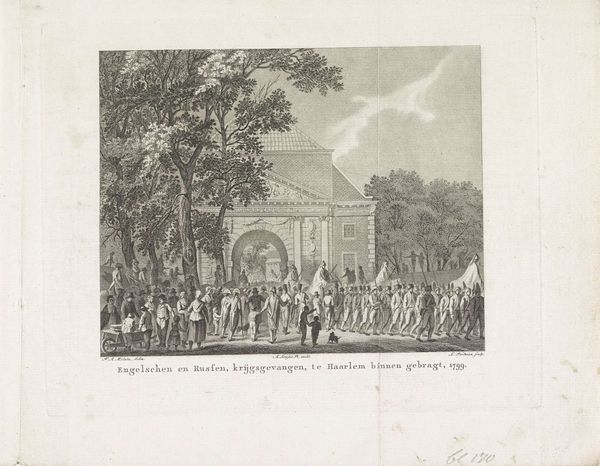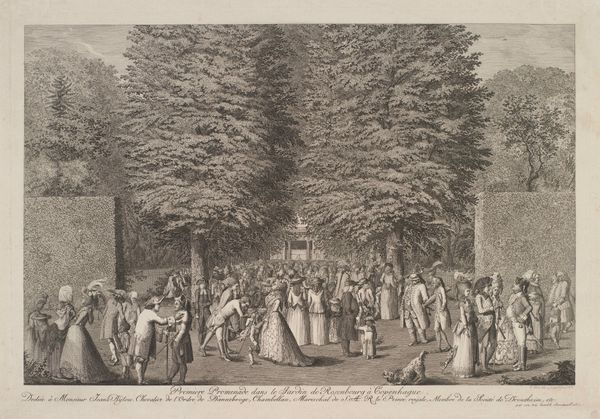
Grote fontein van de Franse tuin in het Park aan de Plantage Parklaan te Amsterdam 1832 - 1888
0:00
0:00
print, etching, engraving
# print
#
etching
#
old engraving style
#
landscape
#
cityscape
#
genre-painting
#
engraving
#
realism
Dimensions: height 104 mm, width 75 mm
Copyright: Rijks Museum: Open Domain
This print by Popko van Groningen depicts the large fountain in the French garden at Plantage Parklaan in Amsterdam, using a reproductive technique like etching or engraving. The image gives us a glimpse into 19th-century leisure. The fountain itself, constructed from stone or cast iron, with its tiered structure and surrounding statuettes, would have been a complex feat of engineering. Notice the sharp delineation between the detailed foreground and the hatched background, allowing the artist to describe the scene. The process of making the print is also revealing. Skilled labor was needed to create the image on the plate, which could then be reproduced many times over. Each print would have been identical. Consider the social context: the fountain would have been a symbol of civic pride, and the print, a portable version of that monument, accessible to a wider public. By emphasizing the materiality and mode of production, we understand more about its cultural value.
Comments
No comments
Be the first to comment and join the conversation on the ultimate creative platform.

